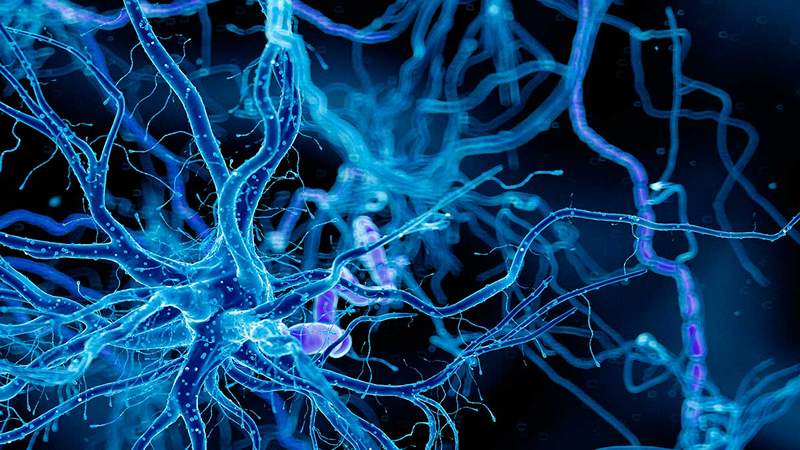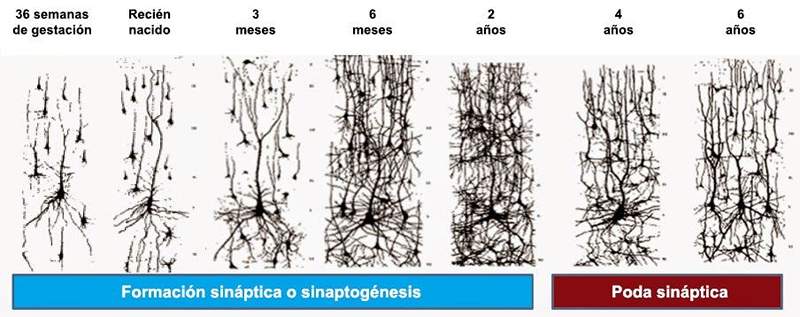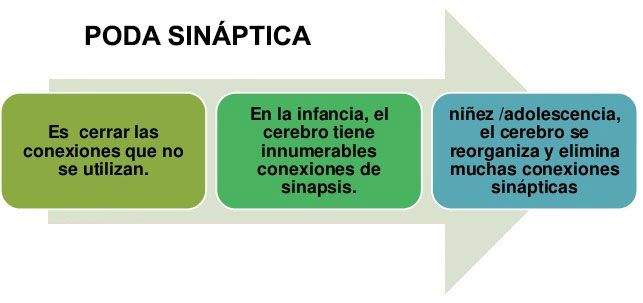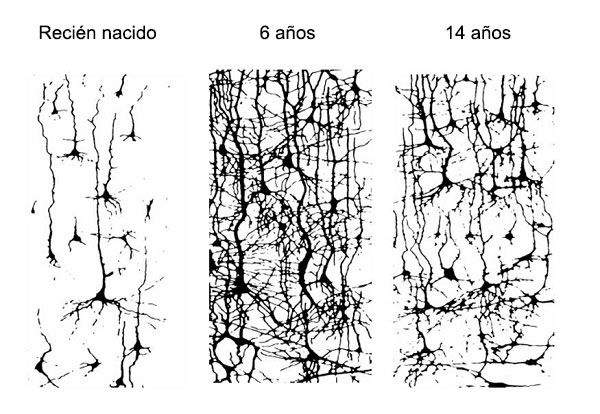The neuronal pruning what is and what is it for us

- 1373
- 169
- John Von
Neuronal pruning is the process by which axons and dendrites of neuronal synapses are destroyed, in order to eliminate extra neurons and their connections, in order to increase the efficiency of neuronal transmissions.
Content
Toggle- When does neuronal pruning occur?
- The influence of neuronal pruning in adolescence
- Why is synaptic pruning important for developing brain?
- But why do some neuronal connections persist, while others do not?
- References
When does neuronal pruning occur?
From our embryonic stage and up to 2 years of age, new neurons and synapses (synaptogenesis) are formed in our brain continuously and at a surprising pace, reaching up to 40.000 new new synapses per second. At the end of this process, babies have many more neurons and synapses than are functionally necessary.
It is then that the destruction stage of the synapses that are not used and the strengthening or myelination of which they are used appears. This strengthening will make the connections that are faster and more effective.
The neuronal pruning (or destruction of neuronal synapses) is the process by which additional synapses are eliminated, which serves to increase the efficiency of the neuronal network. The entire process continues to sexual maturation, at which time almost 50% of synapses present at 2 years of age have been eliminated. The pattern and pruning in the timeline varies according to the brain region.

The child brain increases 5 times its size until it reaches adulthood, reaching approximately whopping up to 86 (± 8) billion neurons inside. Two factors contribute to this brain growth: The proliferation of synaptic connections between neurons and myelinization of nerve fibers, The total number of neurons, however, remains the same.
Neuronal pruning is strongly influenced by environmental factors and it is believed that learning represents. From adolescence (at approximately 14 years), the volume of synaptic connections decreases again because an important synaptic pruning occurs at this time of life.
The influence of neuronal pruning in adolescence
Numerous studies indicate that although this is true that there is a large neuronal pruning in many regions of the brain, the same does not happen in all. For example, in the prefrontal cortex, neuronal synapses continue to be created in preteens (11-12 years) and then decrease and strengthen those that remain, a task that does not conclude until after 20 years.
The prefrontal cortex is the main responsible for the executive function (design of future plans, establishment of goals, start of activities, etc.) and self -regulation of behavior. Also thanks to the development of the prefrontal lobe during adolescence, connections are improved with some other structures already developed During the first years of life, such as the amygdala, which will make many of its automatic reactions become better controlled, progressively decreasing the impulsivity of the first years of puberty.
As the different brain areas are integrated from each other, the regulation of the impulses and emotions that are immature at the beginning of adolescence, at the end of this stage and during adulthood, it will become much more effective.

 The "new senses": vestibular and proprioception
The "new senses": vestibular and proprioception Why is synaptic pruning important for developing brain?
As we have just seen, one of the great strategies that nature uses to build nerve systems is overproduce neuronal elements, such as neurons, axons and synapses, and then prune the excess. In fact, this overproduction is so important that only half of the neurons generated by mammalian embryos will survive after birth.
But why do some neuronal connections persist, while others do not?
Apparently newborn neurons migrate through chemically defined routes and when they reach their destination (they have genetically assigned), they compete with their "sisters" neurons to connect with their predetermined goals.
Victorious neurons receive trophic or nutritious factors that allow them to survive, while loss neurons fader in a process called apoptosis or cell death. The moment of cell death is genetically programmed and occurs in different phases of the embryonic development of each species.
For decades, neuroscientists believed that neural pruning ended shortly after birth. But in 1979, Peter Huttenlocher, a neurologist at the University of Chicago, showed that this strategy of excess production and pruning actually continues long after birth.
Neuronal synapses proliferate after birth, reaching twice its neonatal levels in the middle and end of childhood, and then decrease precipitously during adolescence.

These changes at the synapse level cause a neuronal restructuring that most likely has important consequences for both normal and abnormal brain function. The rationalization of neuronal circuits could explain the Increase in cognitive skills that occurs in adolescence and early adulthood. On the other hand, the loss of many other neuronal pathways could be the cause that we have difficulty recovering from a traumatic brain injury, since eliminating synaptic redundances decreases our ability to develop alternative ways to avoid the damaged region.
Besides, Many important mental illnesses begin to appear in adolescence, fact that some scholars believe that it may be related or even be the cause of the great synaptic pruning that occurs. In the 80s Irwin Feinberg, a professor of psychiatry and behavioral sciences at the University of California, he began to hypothesize that disorderly synaptic pruning could explain the age of onset of schizophrenia, and in 2016 the researchers published genetic and experimental evidence that supports this neuronal association.
Although the reasons for synaptic pruning in the human brain are beginning to unravel, this process seems to have significant consequences is normal brain function and can provide key information about the causes of some neuropsychiatric diseases.
References
- CAO G, KO CP (June 2007). "Schwann Cell-Derned Factors Modlate Synaptic Activities at Developing Neuromuscular Synapses". J. Neurosci
- Chechik, G; Meilijson, me; RUPIN, E (1998). "Poda synaptic in development: a computational account". Neuronal computing
- Iglesias, j.; Eriksson, J.; Grize, f.; Tomassini, m.; Villa, a. (2005). "Dynamics of pruning in large -scale stimulating neuronal networks". Biosystems
- François Ansermet & Pierre Magistretti: “To each one his brain. Neuronal and unconscious plasticity ". Discussions

